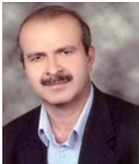References
-
1.
Moeller FG, Barratt ES, Dougherty DM, Schmitz JM, Swann AC. Psychiatric aspects of impulsivity. Am J Psychiatry. 2001;158(11):1783-93. [PubMed ID: 11691682].
-
2.
Eysenck S. Development of a measure of impulsivity and its relationship to thesuperfactors of personality. 17th ed. Washington, D.C: American Psychiatric Association; 1993. p. 141-9.
-
3.
Dickman SJ. Functional and dysfunctional impulsivity: personality and cognitive correlates. J Pers Soc Psychol. 1990;58(1):95-102. [PubMed ID: 2308076].
-
4.
Dickman S. Impulsivityand information processing. Washington, D.C: AmericanPsychiatric Association; 1993. p. 151-84.
-
5.
Barratt E. Impulsiveness andaggression. Chicago: University of Chicago; 1994. p. 61-79.
-
6.
Nigg JT, Silk KR, Stavro G, Miller T. Disinhibition and borderline personality disorder. Dev Psychopathol. 2005;17(4):1129-49. [PubMed ID: 16613434].
-
7.
Patton JH, Stanford MS, Barratt ES. Factor structure of the Barratt impulsiveness scale. J Clin Psychol. 1995;51(6):768-74. [PubMed ID: 8778124].
-
8.
Chamberlain SR, Sahakian BJ. The neuropsychiatry of impulsivity. Curr Opin Psychiatry. 2007;20(3):255-61. [PubMed ID: 17415079]. https://doi.org/10.1097/YCO.0b013e3280ba4989.
-
9.
Chudasama Y. Animal models of prefrontal-executive function. Behav Neurosci. 2011;125(3):327-43. [PubMed ID: 21639603]. https://doi.org/10.1037/a0023766.
-
10.
L’Abate L. McCown WG, Johnson JL, Shure MB, editors. A family theory of impulsivity, in the impulsive client. Washington, DC: American Psychological Association; 1993. p. 93-117.
-
11.
Kagan J. Galen’s prophecy: temperament in human nature. New York; 1994.
-
12.
Evenden JL. Varieties of impulsivity. Psychopharmacol. 1999;146(4):348-61. [PubMed ID: 10550486].
-
13.
Monterosso J, Ainslie G. Beyond discounting: possible experimental models of impulse control. Psychopharmacol. 1999;146(4):339-47. [PubMed ID: 10550485].
-
14.
Ainslie G. Specious reward: a behavioral theory of impulsiveness and impulse control. Psychol Bull. 1975;82(4):463-96. [PubMed ID: 1099599].
-
15.
Ho MY, Al-Zahrani SS, Al-Ruwaitea AS, Bradshaw CM, Szabadi E. 5-hydroxytryptamine and impulse control: prospects for a behavioural analysis. J Psychopharmacol. 1998;12(1):68-78. [PubMed ID: 9584970].
-
16.
Horn NR, Dolan M, Elliott R, Deakin JF, Woodruff PW. Response inhibition and impulsivity: an fMRI study. Neuropsychologia. 2003;41(14):1959-66. [PubMed ID: 14572528].
-
17.
Holmes J, Hever T, Hewitt L, Ball C, Taylor E, Rubia K, et al. A pilot twin study of psychological measures of attention deficit hyperactivity disorder. Behav Genet. 2002;32(6):389-95. [PubMed ID: 12467337].
-
18.
Avila C, Cuenca I, Felix V, Parcet MA, Miranda A. Measuring impulsivity in school-aged boys and examining its relationship with ADHD and ODD ratings. J Abnorm Child Psychol. 2004;32(3):295-304. [PubMed ID: 15228178].
-
19.
Bechara A, Damasio H, Damasio AR. Emotion, decision making and the orbitofrontal cortex. Cereb Cortex. 2000;10(3):295-307. [PubMed ID: 10731224].
-
20.
Brunner D, Hen R. Insights into the neurobiology of impulsive behavior from serotonin receptor knockout mice. Ann N Y Acad Sci. 1997;836:81-105. [PubMed ID: 9616795].
-
21.
Bechara A, Damasio AR, Damasio H, Anderson SW. Insensitivity to future consequences following damage to human prefrontal cortex. Cognition. 1994;50(1):7-15.
-
22.
Bechara A. The neurology of social cognition. Brain. 2002;125(8):1673-5.
-
23.
Arce E, Santisteban C. Impulsivity: a review. Psicothema. 2006;18(2):213-20. [PubMed ID: 17296034].
-
24.
Barkley RA. Behavioral inhibition, sustained attention, and executive functions: constructing a unifying theory of ADHD. Psychol Bull. 1997;121(1):65-94. [PubMed ID: 9000892].
-
25.
López-Villalobos JA, Serrano Pintado I, Delgado Sánchez-Mateos J. Trastorno por déficit de atención con hiperactividad: comorbilidad con trastornos depresivos y de ansiedad. Psicothema. 2004;16(3):402-7.
-
26.
Diagnostic and statistical manual of mental disorders. 5th ed. 2013.
-
27.
Linnoila M, Virkkunen M, Scheinin M, Nuutila A, Rimon R, Goodwin FK. Low cerebrospinal fluid 5-hydroxyindoleacetic acid concentration differentiates impulsive from nonimpulsive violent behavior. Life Sci. 1983;33(26):2609-14. [PubMed ID: 6198573].
-
28.
Coccaro EF, Siever LJ, Klar HM, Maurer G, Cochrane K, Cooper TB, et al. Serotonergic studies in patients with affective and personality disorders. Correlates with suicidal and impulsive aggressive behavior. Arch Gen Psychiatry. 1989;46(7):587-99. [PubMed ID: 2735812].
-
29.
Soloff PH, Lynch KG, Kelly TM, Malone KM, Mann JJ. Characteristics of suicide attempts of patients with major depressive episode and borderline personality disorder: a comparative study. Am J Psychiatry. 2000;157(4):601-8. [PubMed ID: 10739420].
-
30.
Soloff PH, Lis JA, Kelly T, Cornelius J, Ulrich R. Risk factors for suicidal behavior in borderline personality disorder. Am J Psychiatry. 1994;151(9):1316-23. [PubMed ID: 8067487].
-
31.
McCown WG. Multi-impulsive personality disorder and multiple substance abuse: evidence from members of self-help groups. Br J Addict. 1988;83(4):431-2. [PubMed ID: 3395723].
-
32.
O'Boyle M, Barratt ES. Impulsivity and DSM-III-R personality disorders. Pers Individ Dif. 1993;14(4):609-11.
-
33.
Kirby KN, Petry NM, Bickel WK. Heroin addicts have higher discount rates for delayed rewards than non-drug-using controls. J Exp Psychol Gen. 1999;128(1):78-87. [PubMed ID: 10100392].
